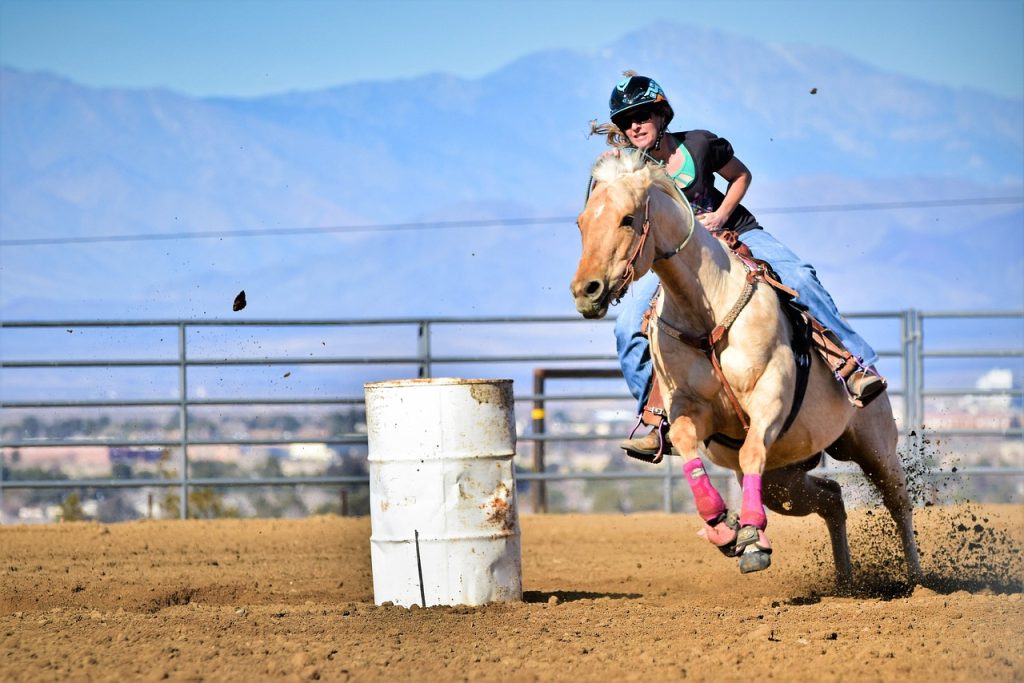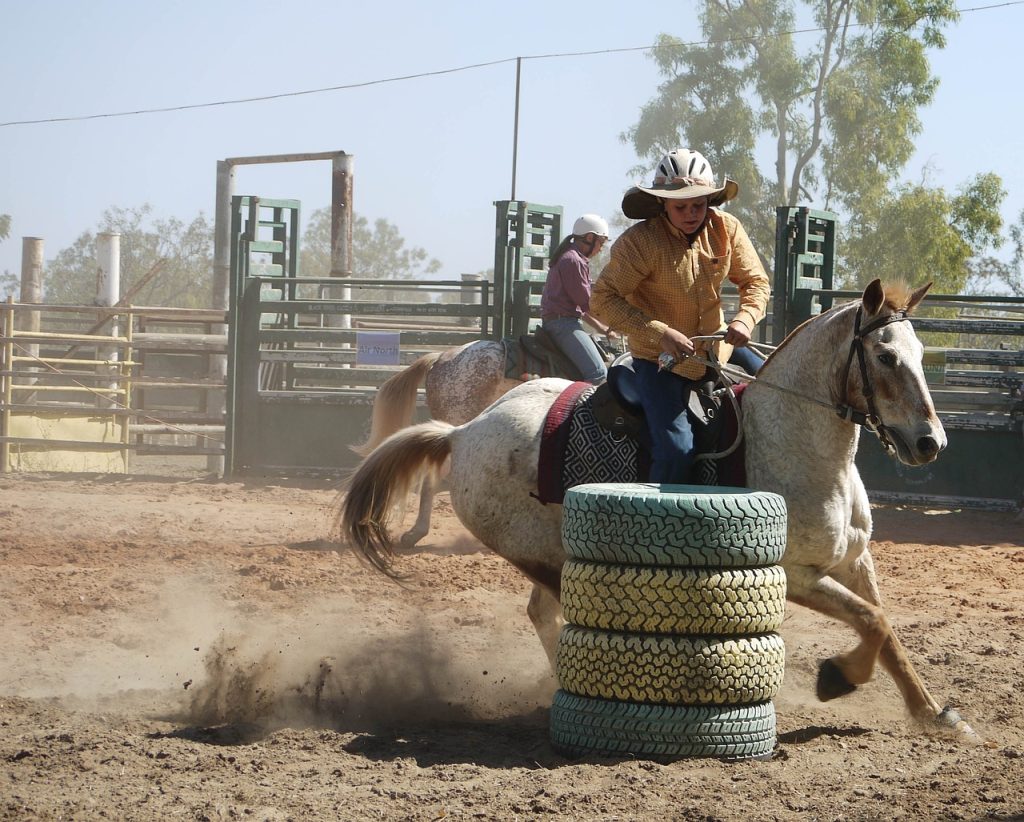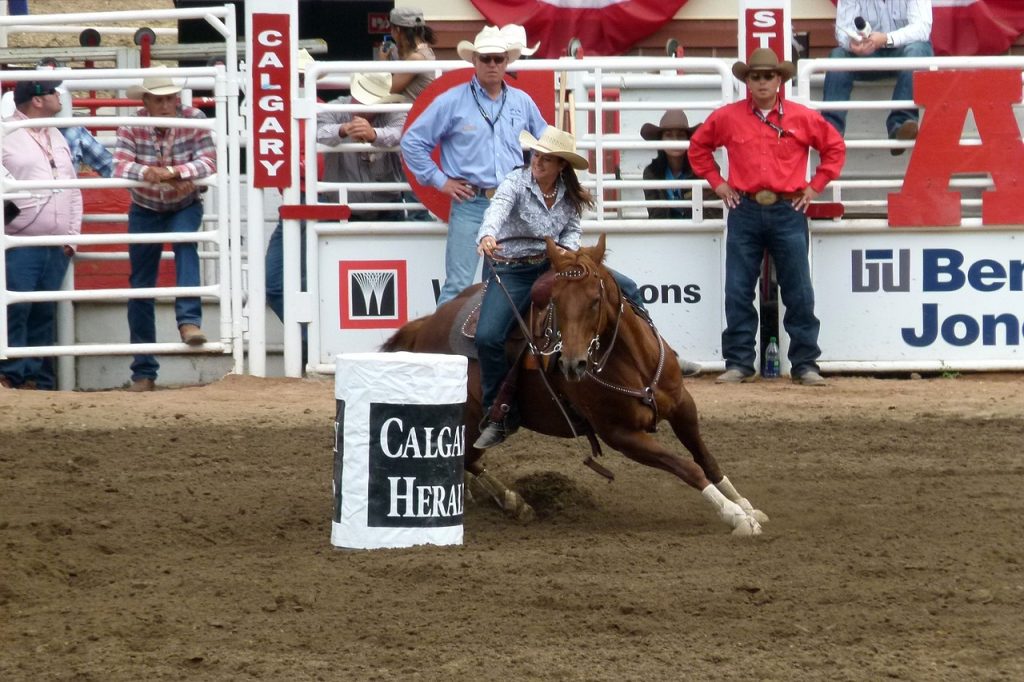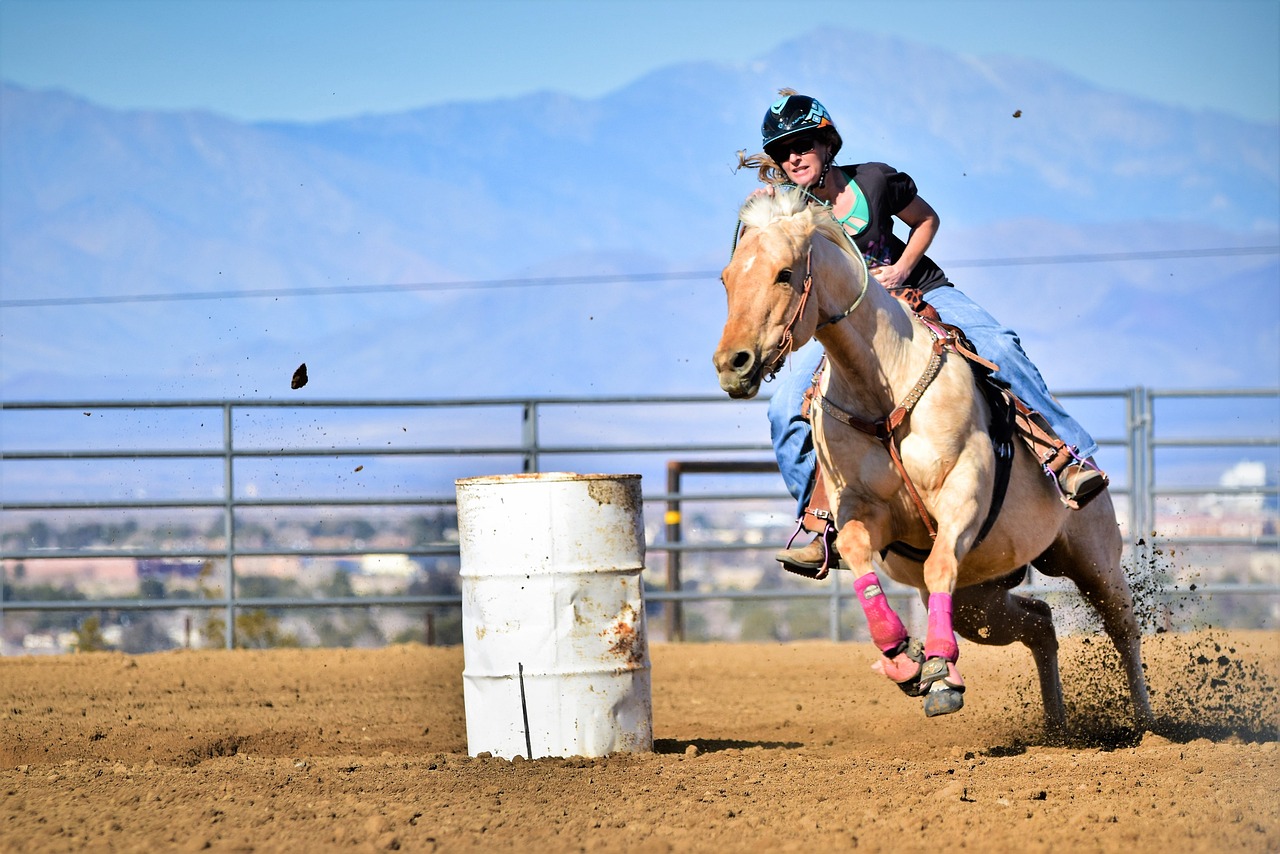Unlock the secrets of advanced barrel racing techniques to step up your game like never before! This article is for all the barrel racing enthusiasts out there, ready to hone their skills and push their boundaries. “Mastering Advanced Barrel Racing Techniques” will arm you with the knowledge you need to surpass your own expectations. Whether you’re a novice hoping to climb up the ranks or a seasoned racer yearning for that extra edge, these comprehensive techniques could be just the ticket to your success. So, saddle up folks and get ready to run rings around the competition!
Understanding the Basics of Barrel Racing
Barrel racing is a popular rodeo event that requires speed, skill, and precision. Before you can advance in the sport, it’s essential to understand its roots and fundamental concepts.
The history of barrel racing
Barrel racing dates back to the 1930s when it began as an event for women while the men competed in rodeo exercises. It quickly gained popularity and is now regarded as a highly competitive sport, loved and participated by all, regardless of gender. The women’s professional rodeo association (WPRA) was established in 1948, further endorsing the significance of women in the sport.
The fundamentals of barrel racing
The sport involves a rider and a horse attempting to complete a preset pattern around three barrels placed in a triangular pattern, or “cloverleaf,” in the shortest time possible. Riders navigate the horse around the first barrel on the left, to the next barrel on the right, and finally, around the last barrel on the right before galloping back to the starting point.
Rules and regulations of the sport
In barrel racing, rules are quite simple but vary across different associations. Usually, the clock starts as soon as the horse and rider cross the starting line and stops when they cross the line again after the pattern is complete. If a barrel is knocked over, a five-second penalty is added to the total time. The rider with the quickest time, after considering penalties, wins.
Equipment Essentials for Advanced Barrel Racing
Just like any sport, having the right equipment is essential for advanced barrel racing. It aids in improved performance and ensures safety, both for the rider and the horse.
Choosing the right horse for barrel racing
The right horse is essential for success in barrel racing. Quarter Horses are popular because they are quick, agile, and have a compact body structure. However, any horse breed can be trained for barrel racing provided that they have a competitive spirit, responsiveness to commands, and a strong bond with their rider.
Selection of suitable saddle and bridle
A suitable saddle and bridle are essential for control, rider’s comfort and horse’s comfort. Saddles should be lightweight and well-fitted to not hinder the horse’s movement while maintaining the rider’s stability. A bridle, on the other hand, should offer the rider enough control over the horse without causing discomfort to the animal.
Importance of safety equipment
Safety equipment such as helmets, body protectors, and appropriate riding boots protect both the rider and horse from potential injuries. Remember, ensuring you and your horse’s safety is just as important as winning the race.

This image is property of pixabay.com.
Understanding Horse Physiology and Biomechanics
Understanding your horse’s physiology and how it moves can improve your training methods and eventually your race performance.
Key muscle groups used in barrel racing
During a race, the horse uses nearly all of its muscles. However, some that are heavily relied on include the back and hind leg muscles. These are used for galloping, pivoting around barrels, and fast starts and stops.
Importance of equine conditioning
Conditioning is crucial to enhance your horse’s physical performance and reduce the risk of injury. It involves building your horse’s strength, flexibility, stamina, and overall fitness through regular exercise.
Understanding horse behaviour during races
Horses have unique personalities and understanding your horse’s behaviour during races can help improve your performance. Some horses may display signs of stress or anxiety, while others may get overly excited or aggressive. By understanding and managing these behaviours, you can ensure that your horse performs at its best.
Advanced Training Techniques for Horses
Training is at the core of preparing for advanced barrel races. It helps develop speed, agility, and endurance in your horse – all vital for a successful race.
Implementing interval training
Interval training involves periods of high-intensity exercise followed by rest periods and is an effective way to increase your horse’s speed and cardiovascular fitness. This type of workout builds stamina, enabling your horse to maintain high speed throughout the race.
Developing speed and agility
Speed and agility training involves exercises designed to help the horse move quickly and change direction with precision and control. Agility training includes exercises which enhance your horse’s coordination and quickness.
Methods to improve horse’s endurance
Endurance building exercises include long-distance trotting and galloping. These help to increase your horse’s stamina, allowing it to withstand longer races without fatiguing.

This image is property of pixabay.com.
Rider’s Training for Advanced Barrel Racing
Besides training your horse, you as a rider also need to train yourself to become an effective barrel racer. This includes improving balance, building strength and making split-second decisions during the race.
Enhancing rider’s balance and coordination
Good balance and coordination are key to maintaining a strong riding position, especially at high speeds and during tight turns. Regular practicing, core strengthening exercises, and riding different horses can help enhance your balance and coordination.
Strength training for riders
Strength training, especially for your core, arms, and legs, helps you control the horse more effectively. By improving your strength, you can maintain a good riding posture, provide more stable cues to your horse and reduce your risk of injury.
Mastering split-second decision making during races
Barrel racing requires quick thinking and decision-making in response to the horse’s actions and the course ahead. Regular practice, mental preparation, and learning from past races can help you improve this skill.
Mastering Barrel Patterns
Understanding and mastering barrel patterns is crucial for success in barrel racing.
Understanding basic barrel patterns
The standard barrel pattern in racing is the cloverleaf pattern. Riders must lead the horse around three barrels in a specific sequence without knocking them over.
Creating variations in barrel patterns
Practicing variations of the cloverleaf pattern can help your horse avoid anticipating the course. This can make your horse more adaptable and quick in response during actual races.
Adjusting patterns according to horse’s strengths and limitations
Understanding your horse’s strengths and weaknesses can help tailor barrel patterns for optimal results. If your horse is quick around turns, incorporate more tight turns in your patterns. If your horse accelerates fast, include patterns that require more straightaways.

This image is property of pixabay.com.
Advanced Drills for Barrel Racing
Drills are critical for honing skills, improving performance, and preparing both you and your horse for the action ahead.
Practicing tight turns
Efficiently navigating tight turns around barrels is crucial. Practice drills that require your horse to turn tightly around objects and maintain balance. Remember, quickness in turns will shave seconds off your overall time.
Speed work drills
Speed drills can boost your horse’s performance incredibly. Include activities like sprints, gallops, and acceleration drills in your training regimen to increase your horse’s speed.
Mastering start and stop drills
Effective starts and stops can significantly impact your racing. Developing a horse’s starting speed and abrupt stops can help you save those crucial seconds during the races.
Strategies for Successful Barrel Racing
Crafting a strategy is integral to winning a barrel race. Each race is unique, and being able to adapt to different scenarios will set you apart from the rest.
Analyzing the competition
Studying your competitors helps get a sense of their strengths and weaknesses. Understanding their strategies can help you craft your personal game plan to counter them.
Modifying riding techniques as per race situation
Being flexible with your riding technique is key. Adapting your strategy as per the race’s dynamics allows you to make the most of unexpected situations that may arise during the race.
Adapting to unexpected race scenarios
You can never accurately predict how a race will turn out. Being able to adapt to unexpected scenarios, such as changes in weather, a horse not performing as expected, or a sudden change in track conditions, is vital.
Handling and Preventing Injuries in Barrel Racing
Despite taking precautions, injuries can occur in barrel racing. Recognizing common injuries, implementing preventative measures, and knowing how to recover effectively, are all vital components of participating in the sport.
Common barrel racing injuries in horses and riders
Common injuries in horses include sprains, strains, and fractures. Riders often experience falls leading to fractures, concussions, and, in some cases, more severe injuries. Knowing these common injuries can help recognize them early.
Practices for injury prevention
Regular vet check-ups for your horse, proper conditioning, and using appropriate safety equipment can help prevent injuries. For riders, maintaining fitness levels, wearing protective gear, and practicing good riding techniques can go a long way in preventing injuries.
Recovery strategies post-injury
In the unfortunate event of injury, rest and rehabilitation are key. Consulting with vets and medical professionals can provide the best recovery strategies. In some cases, both horses and riders may need physiotherapy.
Building a Successful Career in Advanced Barrel Racing
The path to success in barrel racing involves more than just excelling in the sport. It takes preparation, sponsorship, and resilience to build a successful career in advanced barrel racing.
Preparing for professional competitions
Professional barrel racing requires a level of skill and commitment that surpasses regular races. It’s crucial to prepare mentally and physically. This can involve more intense training regimens, mental preparedness, and ensuring your horse is at optimum fitness levels.
Tips for gaining sponsorships
A successful career often involves gaining sponsorships. Building a strong resume, promoting yourself effectively, and networking in the right circles can attract potential sponsors.
Managing stress and pressure during competitive events
Competitive events can be stressful for both horses and riders. Learning stress management techniques, staying focused on the goal, and ensuring you enjoy the sport can help manage pressure during these events. Remember, the journey should be as enjoyable as the victory.
